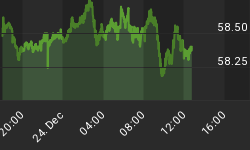Gold Going to Parabolic Top of $10,000 by 2012 - For Good Reasons
No wishful thinking here! As I see it gold is going to a parabolic top of $10,000 by 2012 for very good reasons - sovereign debt defaults, bankruptcies of "too big to fail" banks and other financial entities, currency inflation and devaluations - which will all contribute to rampant price inflation.
Not surprisingly, I have company in that view:
Money manager, Peter Schiff, told Business Week recently that, "Gold could reach $5,000 to $10,000 per ounce in the next 5 to 10 years" and highly respected economist David Rosenberg is of the opinion that "There is no doubt that gold can easily double from here."
THE CAUSES
1. History is No Guide
Gold has only been trading freely since President Nixon's 1971 decision to deny gold to the French and others attempting to repatriate their paper dollars for the metal. As such, there has been a scant forty years of gold production and trading since it was detached from supporting paper money. This period has also been marked by substantially higher monetary and price inflation as well as currency devaluation.
2. Market Manipulation
The Commodity Futures Trading Commission (CFTC) recently held a major hearing which blew the doors off bullion metals futures trading markets in terms of what was revealed publically. I predict this public hearing will be viewed in the period ahead as the precious metals price liberation event of the decade.
It is commonly known that JP Morgan Chase in the major player in commodities futures markets trading. Not only do they take massive naked short positions (betting that prices will fall), they do it with large substantial leverage. What isn't as well known though is that Chase acts as the agent for the Federal Reserve Board and other central banks in 'managing' the markets on their behalf. Central banks want 'orderly' precious metals markets and prices and currencies which don't gyrate wildly. Only then can they achieve stealth inflation in their monetary policy which is so beneficial in servicing debt. It also makes for good (meaning effective) politics.
3. Insufficient Physical Inventories
While it is normal for traders to roll their expiring contracts over into new paper trades, some traders accept cash in settlement rather than the metal. To the amazement of everyone the recent hearing of the CFTC - specifically Jeff Christensen's comments - inadvertently confirmed that there is little bullion in storage at the London Metals Exchange or New York's COMEX to back the metals trading. He justified this fact by noting that only one ounce of one hundred traded is paid out in physical metal. This revelation confirmed a much worse reality than even critics, such as the Gold Anti-Trust Action Committee (GATA), had expected. It seems that the Asian and Mid East buyers and owners of bullion have been removing gold from their dealers' vaults and are taking it "home" thus leaving much less than previously thought in the London, New York and Toronto vaults.
In addition to what looks like a production peak in the gold mining industry (production has fallen in 5 of the last 8 years), central banks have for the first time recently become net purchasers (having bought more gold last year - 425 tons - than at any time since 1964).
The single largest purchasers of metal these days, other than central banks, are the bullion ETF's (Exchange Traded Funds) which ostensibly have their metal inventories in vaults. These relatively new investment vehicles, unfortunately, are not transparent in their business practices. Regular audits by reputable accounting firms and allocated and segregated bullion inventories stored in reputable vaults are opaque at best. This begs the question: "Do the large ETF bullion funds actually have the metal they purport to own, or is their inventory more the 'paper gold' variety in which bullion trading exchanges seem to specialize?"
THE EFFECT
- The revelation, outlined above, that there is insufficient physical inventory to meet new investment demand for ownership and delivery of physical bullion, is about to blow the price lid skyward.
- As public awareness of sovereign debt mounts, it will drive home the reality of mounting government insolvency.
- Confidence in currencies will wilt commensurately.
- Investment demand for real gold and real money as a safe haven investment will expand exponentially.
- These events should take place from mid 2011 through 2012 and extend further out toward 2015 before demand is satiated.
- The dramatic price increases in gold and silver will at that point also satisfy the unstated desire of central banks and politicians to devalue their currencies in order to assist them in meeting their debt and unfunded liabilities.
After the 2008/2009 crash, governments bailed out their failing financial institutions and investment banks through a variety of innovative measures. The next time round most governments will not be in a position to do so - again. Even more troubling, the IMF (International Monetary Fund) will not be capable of rescuing the increasing number of insolvent governments and their financial institutions.
Conclusion
You may think my aforementioned views are crazy or perhaps just that my imagination is way out of hand or, at best, that I don't have access to the appropriate reality checks. Be that as it may, I am increasingly confident that the consequences of fragile sovereign debt, precious metals market manipulation, insufficient physical supply, and the need for a safe haven investment refuge, will drive precious metals bullion and mining stock to unimagined heights.
The circumstances immediately ahead are largely unprecedented. History is therefore only marginally useful as our guide to the future price of precious metals. We are now in genuinely unchartered territory.
Get yourself positioned to take advantage of this event of a lifetime. Protect your assets from the next and more serious leg of the 'Greater Depression' directly ahead. Get a running start NOW on growing your future wealth.
















